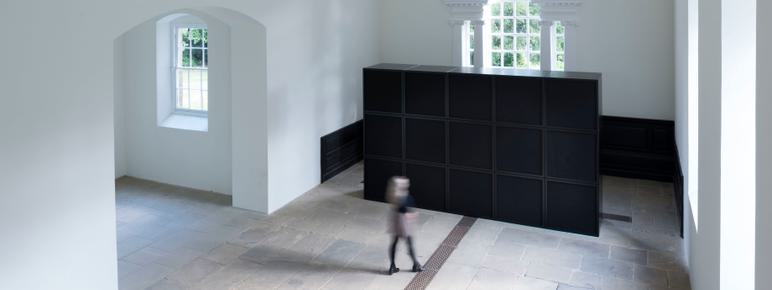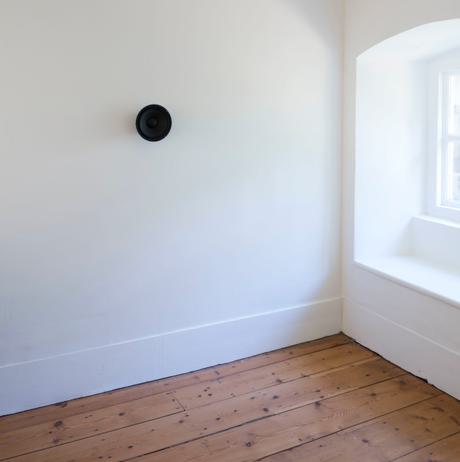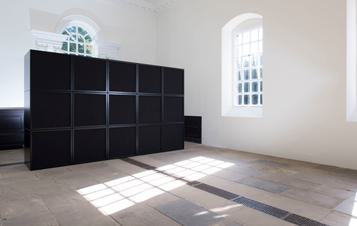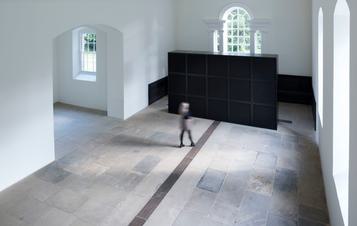
About James Webb: We Listen for the Future
‘Sound has the potential to affect its surroundings, unleashing change. Sound can make the familiar uncanny. James Webb showcases this ability.’
YSP presented work by interdisciplinary, South African artist, James Webb. Considered to be one of the pioneers of sound art, the artist showcased We Listen for the Future, an exhibition comprising four sound pieces. Webb will take up residency at YSP in 2018, resulting in a new site-specific work for the Park.
Born in 1975 in Kimberley, South Africa, Webb is one of the foremost artists of his generation and is known especially for his sound installations. Untitled (with the sound of its own making), 2016, filled the Chapel, referencing the influential Robert Morris work Box with the Sound of its Own Making, 1961. This powerful wall of loudspeakers broadcasts the rhythmic sound of hands beating on doors. It resonates physically and references ancient law of religious sanctuary, as well as the current refugee crisis. In contrast, All that is Unknown, 2016, comprises a pair of speakers separated by the length of a room, playing the sound of heartbeats at the threshold of audibility so that they can only be experienced in close quarters, drawing us into a space that is intimate by association.
In the open air visitors were able to experience, There’s no place called home, 2004–, a site-specific element of an on-going project to locate foreign birdsong in non-native environments. It uses a contrasting and mixed audio soundtrack to appear as “real” and “lifelike” as possible. It is especially pertinent in the manmade Bretton Estate of YSP and so near to the home of Charles Waterton at Walton Hall, who was one of the first naturalists and known for introducing the little owl to Britain.
We live on a placid island of ignorance in the midst of black seas of infinity, and it was not meant that we should voyage far, 2012 introduced to YSP the calls of jackals from partner organisation the NIROX Foundation Trust. NIROX is based in the Cradle of Humankind in South Africa, an area listed by UNESCO as a World Heritage Site on account of its extraordinary palaeo-anthropological treasures and unique landscape.
…an offering such as this is both highly topical and potentially challenging
- Aesthetica Magazine
You might also like
More- Art Outdoors

David Nash: 49 Square
49 Square was created by Nash in 2013 as a permanent work in the YSP landscape. It comprises 49 Himalayan birch trees, which, planted in seven rows of seven, will grow to form a white cube on the lake’s embankment. - News
Staff Profile: William Grinder, Head Groundsman at YSP
13 November 2024 
Angela Harding: A Chronicle of Birds and Beasts
–Ten years after Angela Harding's first exhibition at YSP, we are thrilled to be welcoming her back in winter 2026.- Art Outdoors

Lucy + Jorge Orta: Diana
Woodland Spirit – Diana, formerly known as Ulbelka (a water goddess and the ancient name of the Huveaune, also a word meaning ‘destroyer’, referencing the river’s tempestuous character), was renamed by the artists in 2014 to reflect its current location at YSP.


